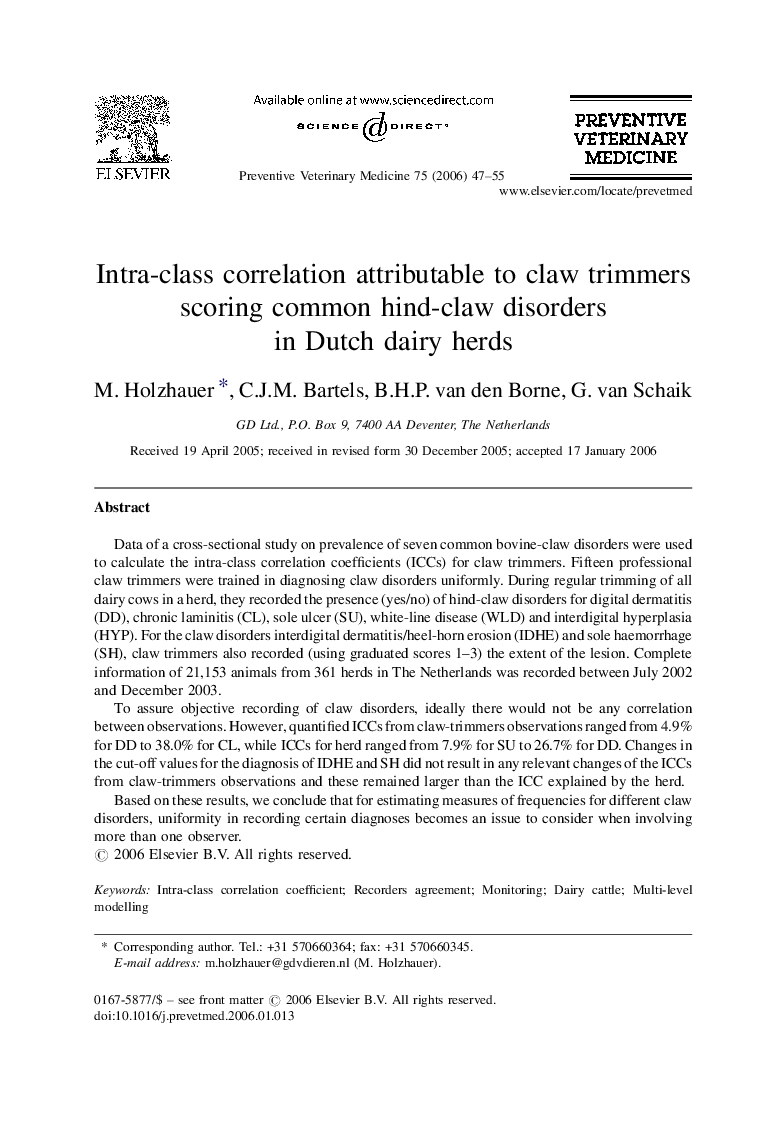| Article ID | Journal | Published Year | Pages | File Type |
|---|---|---|---|---|
| 2453730 | Preventive Veterinary Medicine | 2006 | 9 Pages |
Data of a cross-sectional study on prevalence of seven common bovine-claw disorders were used to calculate the intra-class correlation coefficients (ICCs) for claw trimmers. Fifteen professional claw trimmers were trained in diagnosing claw disorders uniformly. During regular trimming of all dairy cows in a herd, they recorded the presence (yes/no) of hind-claw disorders for digital dermatitis (DD), chronic laminitis (CL), sole ulcer (SU), white-line disease (WLD) and interdigital hyperplasia (HYP). For the claw disorders interdigital dermatitis/heel-horn erosion (IDHE) and sole haemorrhage (SH), claw trimmers also recorded (using graduated scores 1–3) the extent of the lesion. Complete information of 21,153 animals from 361 herds in The Netherlands was recorded between July 2002 and December 2003.To assure objective recording of claw disorders, ideally there would not be any correlation between observations. However, quantified ICCs from claw-trimmers observations ranged from 4.9% for DD to 38.0% for CL, while ICCs for herd ranged from 7.9% for SU to 26.7% for DD. Changes in the cut-off values for the diagnosis of IDHE and SH did not result in any relevant changes of the ICCs from claw-trimmers observations and these remained larger than the ICC explained by the herd.Based on these results, we conclude that for estimating measures of frequencies for different claw disorders, uniformity in recording certain diagnoses becomes an issue to consider when involving more than one observer.
